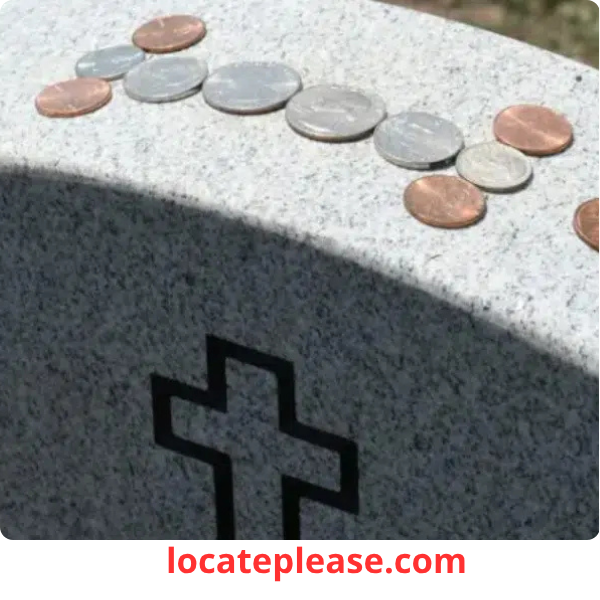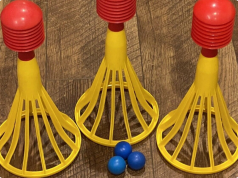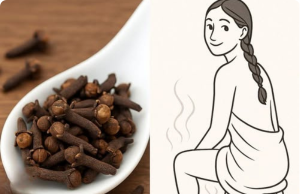Walking through a cemetery, you may notice something small but significant resting atop gravestones: coins. These aren’t remnants of someone dropping loose change by accident. Instead, they are deliberate tokens left behind as part of an unspoken tradition steeped in meaning and respect. Whether it’s a penny glimmering in the sunlight or a quarter bearing silent witness to sacrifice, these coins tell stories of connection, service, and remembrance. Let’s explore the profound symbolism behind this practice and why it holds such importance, especially in military cemeteries.
A Timeless Gesture with Deep Roots
The act of leaving coins at gravesites is not new; its origins stretch back centuries. Some trace it to ancient practices where offerings were made to honor the dead. Others point to more recent history, particularly during the Vietnam War era, when tensions surrounding the conflict led soldiers and loved ones to seek quieter ways to pay tribute. Leaving a coin became a subtle yet powerful way to acknowledge a fallen comrade without drawing attention or inviting controversy. Over time, this simple act evolved into a layered tradition rich with meaning.
Each denomination of coin carries a specific message, allowing visitors to communicate their relationship to the deceased in a deeply personal way. Understanding these meanings transforms how we view those seemingly ordinary coins resting on headstones.
The Language of Coins
Here’s what each type of coin signifies:
Penny: “I Remember You”
A penny is perhaps the most common coin found on gravestones. It symbolizes a basic acknowledgment—a visitor stopping by to say, “I saw your name. I remembered you.” While the person leaving the penny may not have known the deceased personally, their gesture ensures that the individual is not forgotten. For families visiting the grave, finding a penny can provide comfort, knowing that others took a moment to honor their loved one’s memory.
Nickel: “We Served Together”
Leaving a nickel indicates a deeper bond—the giver trained alongside the deceased during boot camp. This coin represents shared experiences like enduring grueling drills, complaining about chow lines, and forming camaraderie under challenging circumstances. A nickel speaks to the foundational connections forged before deployments, battles, or medals entered the picture. It honors the beginning of a soldier’s journey and the friendships built along the way.
Dime: “We Fought Side by Side”
A dime takes the connection even further, signifying that the person who left it served with the deceased in combat. They might have been in the same unit, fought in the same missions, or even shared a foxhole. This coin reflects a profound bond born out of stress, fear, and survival. By leaving a dime, the giver silently declares, “I stood beside you. I witnessed your courage firsthand.”
Quarter: “I Was There When You Died”
Of all the coins, a quarter carries the heaviest weight. It signifies that the person leaving it was present when the soldier died—perhaps holding their hand, trying to save them, or simply bearing witness to their final moments. A quarter says, “I was with you at the end,” offering a poignant reminder of ultimate sacrifice. It’s a gesture laden with emotion and reverence, speaking volumes without uttering a word.
An Unspoken Language of Grief and Respect
What makes this tradition so beautiful is its simplicity and universality. There’s no need for grand gestures or formal ceremonies. Visitors don’t have to announce themselves or leave notes explaining their presence. The coins speak for themselves, quietly conveying messages of love, gratitude, and solidarity. Yet, once you understand their significance, walking past a coin-laden gravestone becomes impossible without pausing to reflect.
For families of the fallen, discovering coins left by strangers can bring immense solace. Even if they’ll never know who placed them there, the coins serve as tangible proof that someone remembers. Someone cares. In a world where grief can feel isolating, these small acts of remembrance create a sense of community and continuity.
Why Coins?
Why not flowers, stones, or photographs? Coins offer several advantages:
- Durability : Unlike flowers, which wilt over time, coins remain intact, standing up to weather and time.
- Value : Coins hold both material and emotional value. Their permanence makes them fitting tributes to lives lost.
- Practicality : Many cemeteries collect leftover coins periodically and donate them to veteran organizations. This ensures that every penny, nickel, dime, or quarter continues to do good long after it’s been placed on a headstone.
A Tradition That Speaks Volumes
The tradition of leaving coins on gravestones is a testament to humanity’s desire to connect—even across lifetimes. Each coin tells a story, whether it’s one of passing acknowledgment, shared training, battlefield camaraderie, or final farewells. It’s a language of grief and respect, spoken without words but understood by those who take the time to listen.
Next time you visit a cemetery and spot a coin gleaming on a gravestone, pause for a moment. Consider the hands that left it and the life it commemorates. And if you feel moved, consider leaving a coin yourself. After all, remembering is one of the greatest gifts we can give—to the living and the departed alike.










